Enjoying the Local Sites ~Part 4~ Continued, Again
Even more of Mount Rainier, Washington, and Parts of Oregon 11/4/2019 through 11/8/2019
The Pacific Northwest is my home, and after trying to find a better place to live. in the 1980s, I realized there’s no place I’d rather be. The PNW has so much to offer, and one of my favorites is the chain of McMenamins.
McMenamins Founded in 1983 by brothers Mike and Brian McMenamin, they started with Produce Row Café in 1974 and opened Oregon’s first brewpub in 1985. In 1990, they entered the broader hospitality business, converting a 74-acre site into McMenamins Edgefield.
 Known for rehabilitating historical properties they have at least nine locations on the National Register of Historic Places. McMenamins has remained a family-owned chain with brewpubs, breweries, music venues, historic hotels, and theater pubs with 63 locations in Oregon and Washington.
Known for rehabilitating historical properties they have at least nine locations on the National Register of Historic Places. McMenamins has remained a family-owned chain with brewpubs, breweries, music venues, historic hotels, and theater pubs with 63 locations in Oregon and Washington.
Thursday, November 7, 2019
Forest Grove to Eugene, and back to Troutdale, OR
I usually have reasons behind things I do, and in this case, staying in Forest Grove was to enjoy time with my friends and treat my sister to breakfast at McMenamins Grand Lodge. I wanted to give her a taste of what McMenamins is all about, starting with the Grand Lodge.


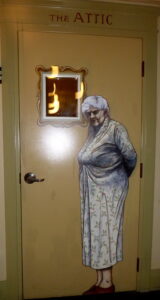
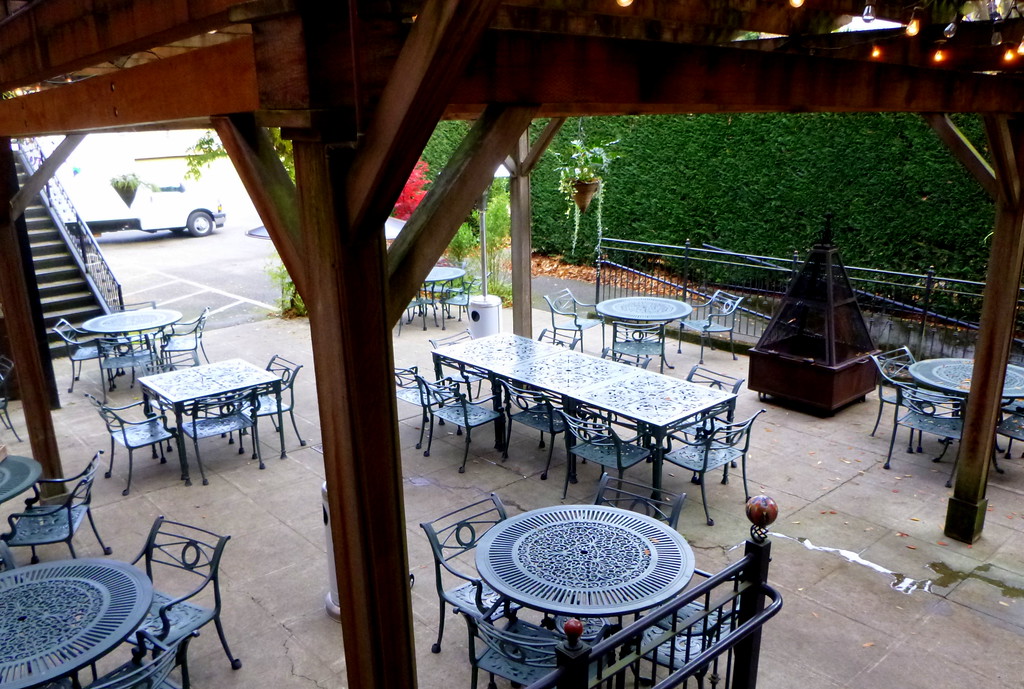


The Grand Lodge
Originally a Masonic & Eastern Star Home built in 1922, served as a rest home for Masonic members and their families for 77 years. In 1999, the McMenamins transformed it into the establishment it is today, featuring unique rooms, restaurants, bars, a spa, and summer concerts in the grove, drawing inspiration from its rich past.
Like many historic buildings, The Grand is rumored to have wandering spirits. Late-night guests might encounter historical figures and the Lavender Lady wandering about. They are memorialized with historical photographs and art throughout the property.
During breakfast, we chatted with a friendly waitress who revealed that the Ironwork Grill sources eggs and vegetables from estate chickens and a garden, when possible. We also discovered the existence of secret rooms. Armed with vague clues from the waitress, we embraced the challenge of finding these hidden gems.



As my sister and I marveled at the beautiful architecture and art, we took our time walking through the halls, scrutinizing walls, nooks, crannies, and even ceilings. Art adorned everything, including the pipes. Eventually, we uncovered the secret rooms, reminiscent of childhood adventures, filled with fun discoveries around each corner and through every door.






The Grand Lodge offers a History and Walking Tour guide, providing descriptions of numerous panels and photographs throughout the property. It’s too bad we didn’t know about the walking tour guide until we were leaving. Next time I go there, and I will, I’ll be sure to have the guide and take the time to read it as I’m looking at the artwork and photos.
 Before this trip, my younger sister had mentioned a company from which she purchases herbs and spices, thinking it was located in Oregon. Although I’m not well versed in the world of quality herbs and spices, my sister is quite knowledgeable, and I often learn from her.
Before this trip, my younger sister had mentioned a company from which she purchases herbs and spices, thinking it was located in Oregon. Although I’m not well versed in the world of quality herbs and spices, my sister is quite knowledgeable, and I often learn from her.
Upon looking it up, we discovered that indeed the company is based in Oregon. With some free time on my hands, I learned more about the company and was genuinely impressed by their work.
Even though visiting Mountain Rose Herbs wasn’t initially part of our plans for this journey, during breakfast, we impulsively decided to head south to Eugene and visit their store. It was only a 115-mile detour, one way, and there wasn’t any reason not to go, so off we went.
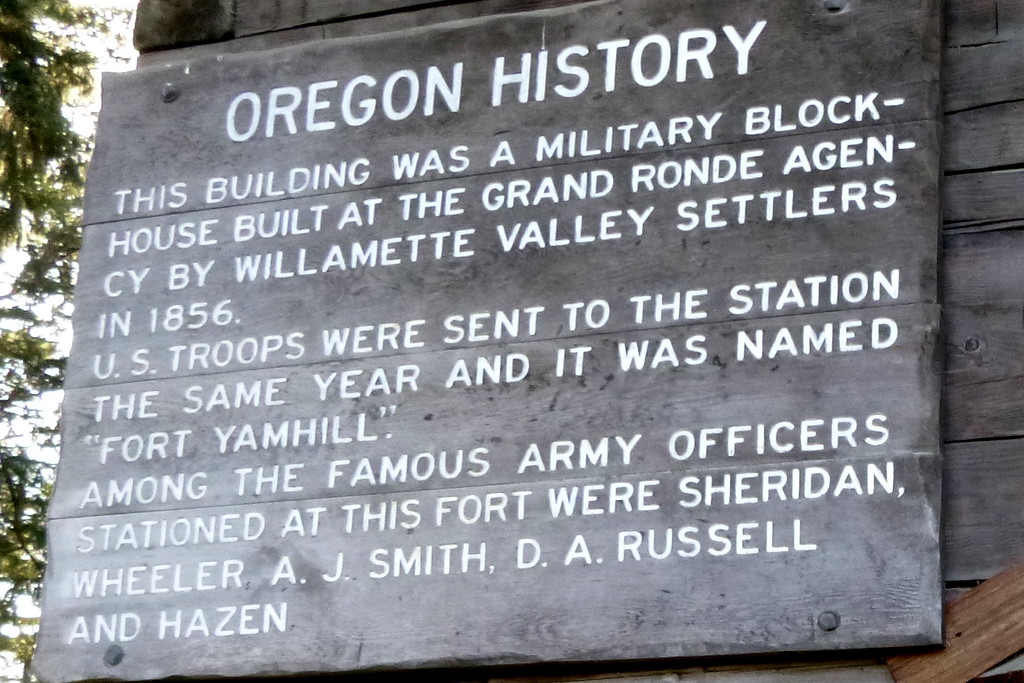

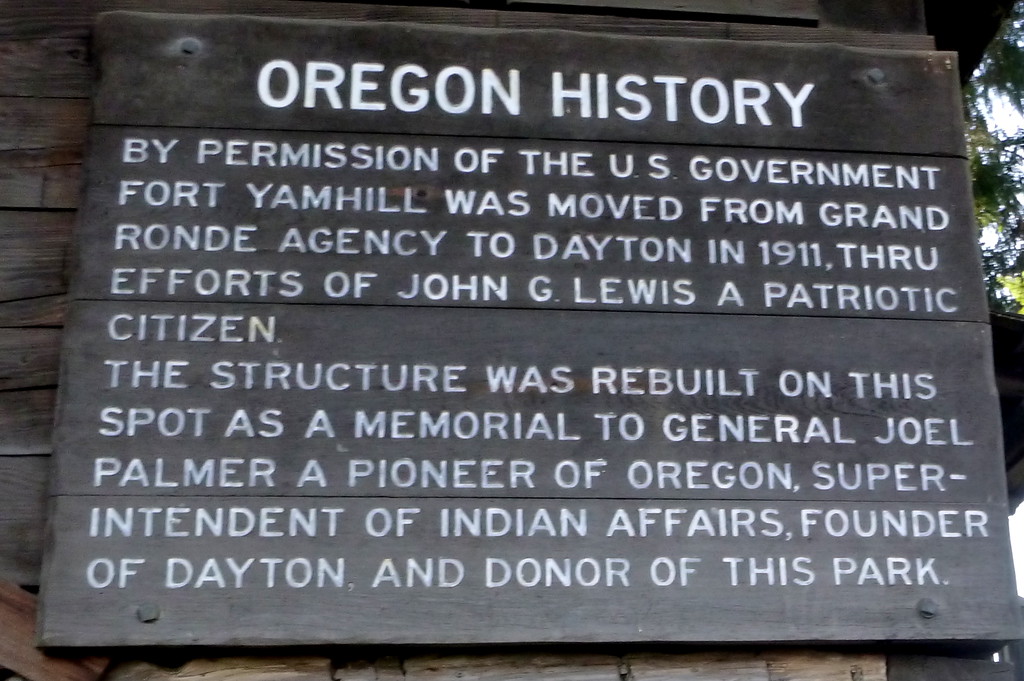
Before long, we stumbled upon an intriguing site in Dayton, OR. The military blockhouse from Fort Yamhill had been relocated to the Courthouse Square. This Blockhouse was constructed in 1856.
The sight of the blockhouse sparked my curiosity, prompting me to dig into the history of Fort Yamhill. My research brought to light that members of 27 Native American tribes from Western Oregon were forcibly moved from their homes to the reservation. The fort was established on the eastern border of the Grand Ronde Indian Reservation “to protect and control” the Native American population within the reservation.
Now, the Fort Yamhill State Heritage Area, approximately 30 miles west of Salem, has earned a spot on my must-visit list. When I head out on a journey, there’s always an opportunity to discover something new.
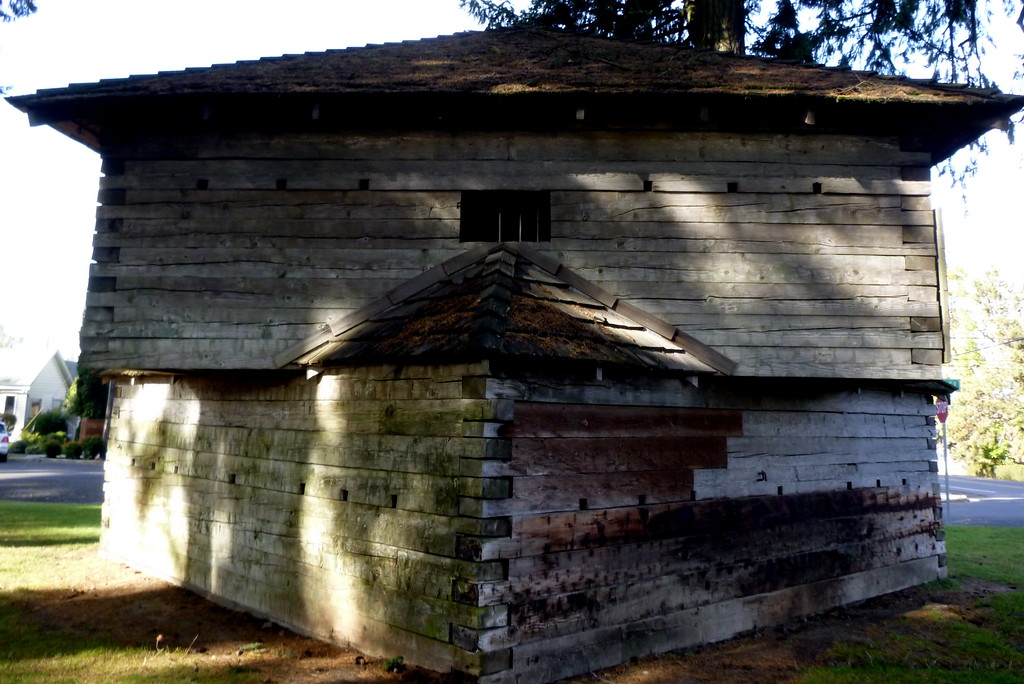

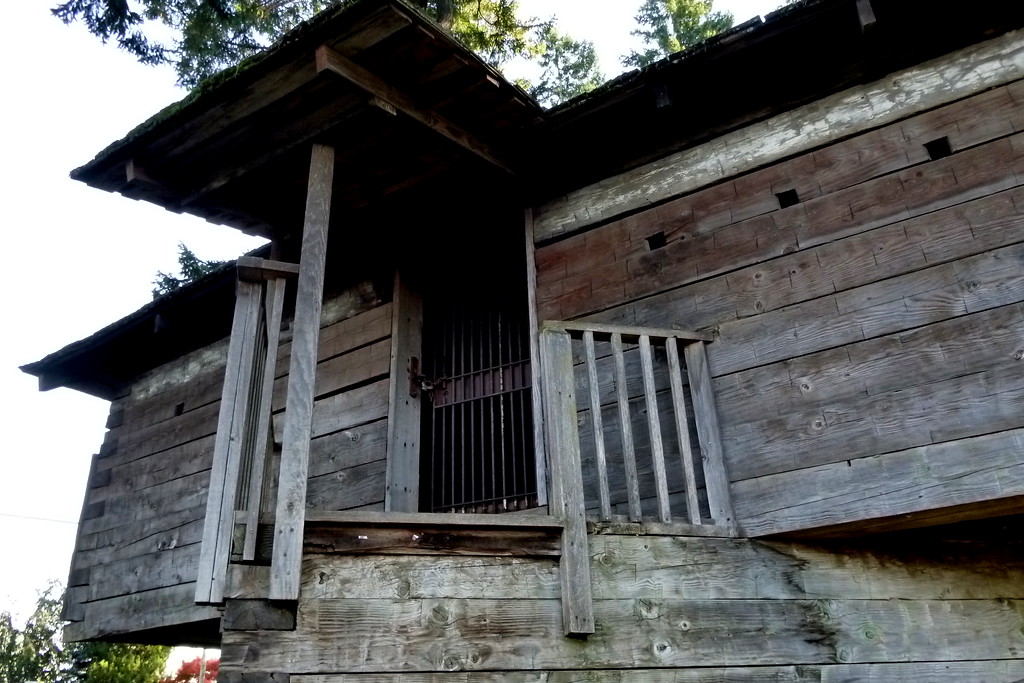
Following a delightful experience immersing ourselves in the fresh air, history, and the visit to Courthouse Park in Dayton, it was time to continue our journey. We continued the rest of the way to Eugene via Interstate 5, and despite it being a highway, the drive was enjoyable. Arriving in Eugene we easily found our way to our destination.

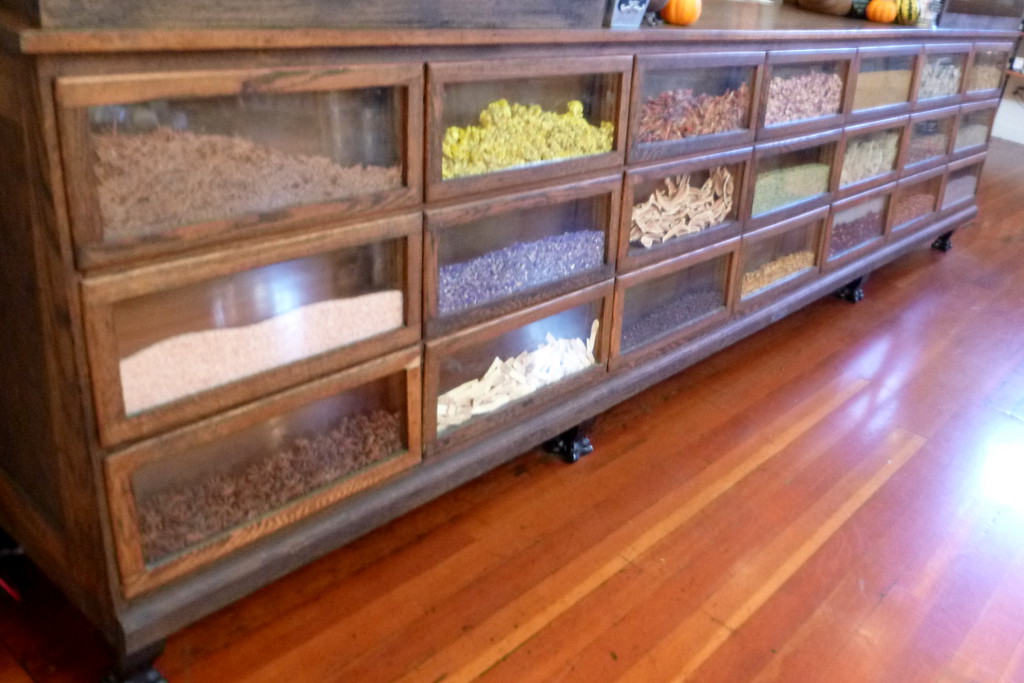

Founded in 1987 by herbalist Rosemary Gladstar in Northern California, Mountain Rose Herb initially began as a mail-order company catering to the needs of students at the California School of Herbal Studies. Although ownership has changed over the past three decades, the company’s commitment to quality products has remained steadfast. In 2010, they relocated to Eugene, OR, where they currently employ over 200 people.
The company expanded and opened its first brick and mortar store in 2016, offering a diverse range of herbs, including some harder-to-find varieties, as well as other products like teas, essential oils, and bath and body items.
Herbs & Spices
Health
Teas
Essential Oils
Bath & Body
Mountain Rose Herbs collaborates with certified organic farms throughout the Pacific Northwest and has received numerous awards and certifications for its commitment to sustainability, fair trade practices, Fair for Life practices, and organic products. The company’s dedication to sourcing and growing sustainable products is evident in its adherence to strict quality control measures. Their history illustrates their expansions and upgrades over the years.
Having spent two decades working for ENGIE Impact, a company specializing in sustainability solutions, waste and recycling management along with other services I enjoyed learning that Mountain Rose Herbs is deeply committed to sustainability.
With the first 12 years at ENGIE Impact dedicated to Utility Expense Management, the experience provided a deep understanding of energy-related terms and practices.
Mountain Rose Herbs demonstrates its commitment to energy efficiency with a LEED standard construction for its building, installation of Energy Star rated heating and cooling units, and the use of renewable energy sources, including a solar array. The company also actively participates in Greenpower and Native Energy programs. Additionally, water conservation measures, such as waterless urinals and minimum flow toilets, have been implemented. The sustainability efforts also extend to packaging, with the company embracing sustainable packaging practices.
 In the final eight years of my career at ENGIE Impact, my focus was Waste Expense Management, delving into the intricacies of waste and recycling practices for our clients. I gained hands-on experience during one of our waste audits at a sizable medical facility in California. Donning hazmat-style suits, we meticulously sifted through their trash to identify the disposed items we ensured there was no hazardous waste, recyclables, or other items mixed in that should be. In the accompanying photo, although our caps were not yet in place, our hair was adequately protected too. I’m on the left.
In the final eight years of my career at ENGIE Impact, my focus was Waste Expense Management, delving into the intricacies of waste and recycling practices for our clients. I gained hands-on experience during one of our waste audits at a sizable medical facility in California. Donning hazmat-style suits, we meticulously sifted through their trash to identify the disposed items we ensured there was no hazardous waste, recyclables, or other items mixed in that should be. In the accompanying photo, although our caps were not yet in place, our hair was adequately protected too. I’m on the left.
Mountain Rose Herbs commitment is further exemplified by the company’s achievement of TRUE Zero Waste certification, with a platinum rating, making them the first company in Oregon to receive this recognition. Their zero-waste certification involves a thorough waste audit, ensuring proper waste disposal and recycling practices.
Mountain Rose Herbs focuses on reduction, reclamation, and recycling in its pursuit of a sustainable and environmentally friendly business model.
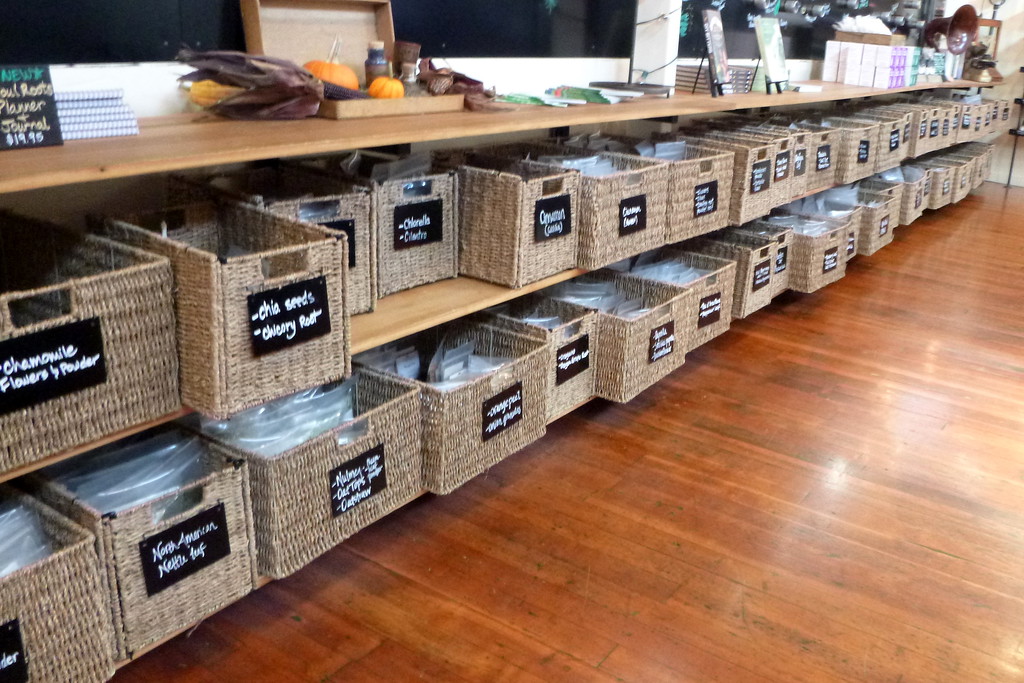
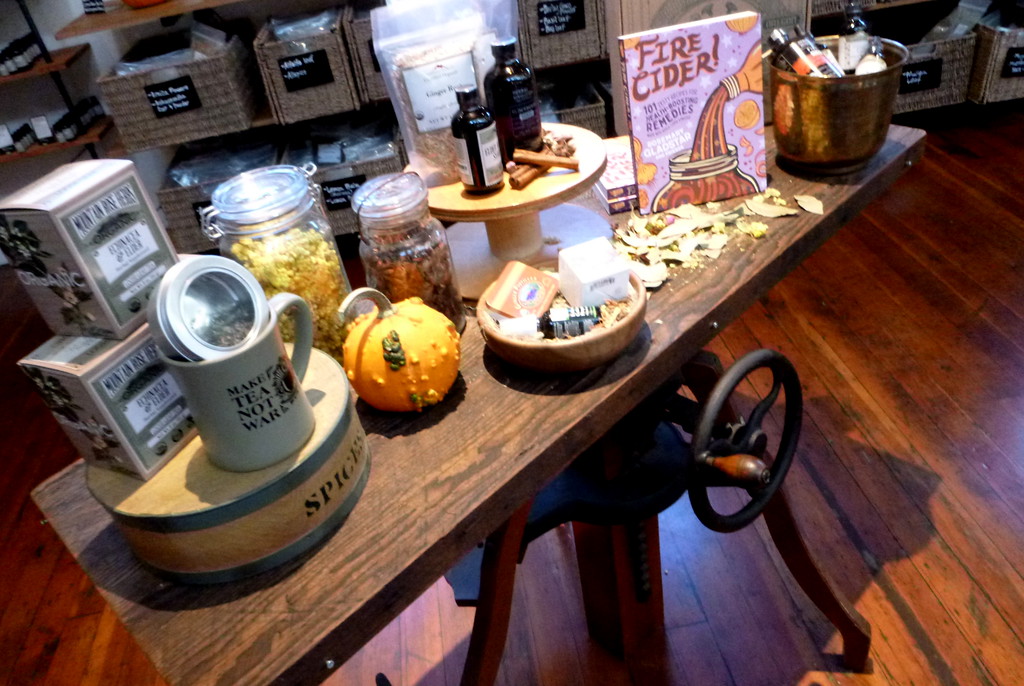

Our trip to Mountain Rose Herbs was truly enjoyable as well as educational. The knowledgeable staff is wonderful and they are happy to answer any questions and provide recommendations. They provided the perfect balance with being helpful while allowing us to browse on our own.
As we continued our journey northward, reflections on this experience lingered. It became clear that our connection to nature is profound. Mountain Rose Herbs not only offers top-notch herbs but also serves as a reminder of our responsibility to preserve the environment and enjoy the many gifts it provides us.
Should your travels bring you near Eugene, Oregon, I highly recommend making a stop at Mountain Rose Herbs. It’s not just a store; it’s an enriching encounter with nature’s wonders.
On our way north, my sister and I talked about the day and what we had planned ahead. The drive took about an hour and a half and went by fast. The day was simple, but spending time with my sister made it special. When we got to Troutdale, OR, we got a room for the night. As I fell asleep, I looked forward to the adventures waiting for us the next day.



Wednesday, November 8, 2019
Troutdale, OR & McMenamins Edgefield Hotel
Similar to the day before we got a room near where we would be having breakfast. I was excited since I knew my sister would love where we were going.
As we pulled in I could see her eyes dart from place to place as she tried to take it all in. As we circled the grounds before parking I could tell she was ready to get out of the van and explore the grounds.
After parking and walking toward the impressive entrance, my suspicions were confirmed. My sister already loved this location. We entered and even though we were both ready for breakfast and especially coffee it was clear she couldn’t wait to look around. I made her wait though as we went into the Black Rabbit Restaurant and Bar for a delicious breakfast.
During breakfast, we talked about the history of the 74-acre McMenamins Edgefield Hotel. Breakfast was scrumptious and the coffee was filled with rich goodness.
Built in 1911, Edgefield served as a poor farm for over seven decades, providing a home for a diverse range of individuals, including sea captains, industrialists, teachers, musicians, and more, all sharing the commonality of needing assistance at some point in their lives.
After finishing breakfast, it was time to explore, and I had planned to take as much time as needed to check out everything. Our first stop was examining photographs from the days when the Edgefield Hotel served as a poor farm.


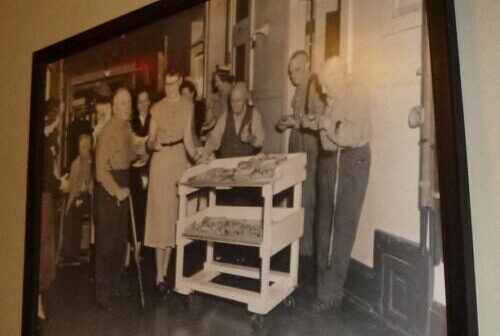
The property operated with agricultural efficiency, with residents providing labor for the 300+ acre farm. It went through challenges, such as the Great Depression, when the population swelled to over 600. In the post-war years, it transformed into more of a nursing home and rehabilitation center, continuing its farm operations until the 1960s.
In the 1970s, with the rise of private nursing homes and in-home care, Edgefield faced a declining population and needed repairs. In 1982, it closed and suffered from vandalism and elemental damage throughout the 1980s. Plans were made to demolish it, but the Troutdale Historical Society intervened, leading to a five-year battle to save the site.

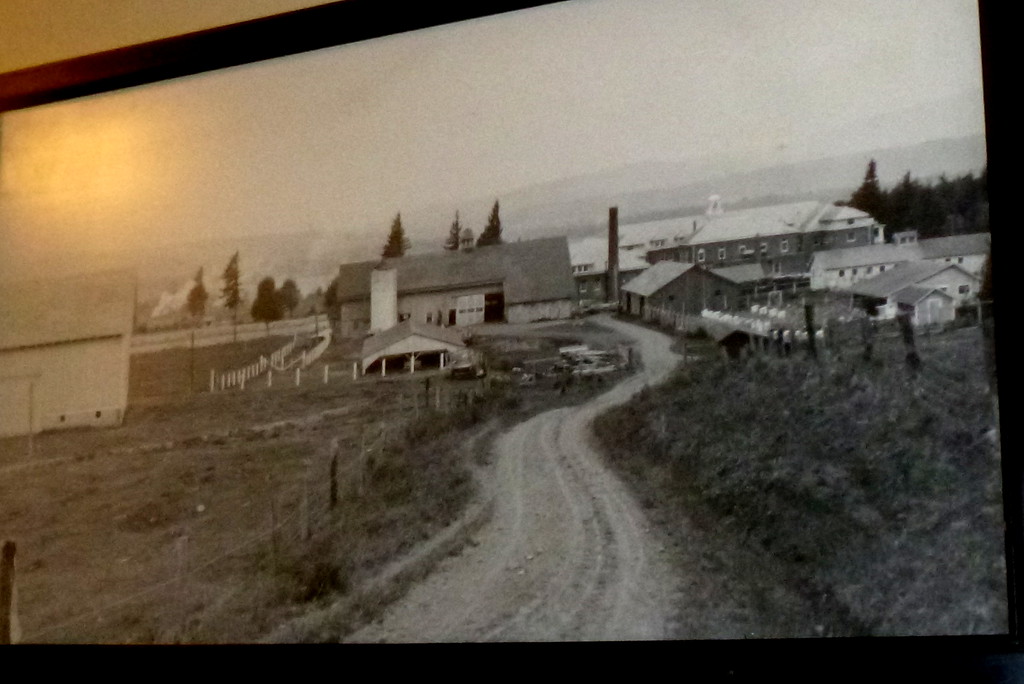

In the 1990s, brothers Mike and Brian McMenamin saw potential in the property as a gathering spot. They secured financing and transformed Edgefield. The first stages included a winery, brewery, pub, movie theater, and lodging. They then expanded, incorporating the renovation of existing structures into hotel rooms, bars, restaurants, event spaces, and more…

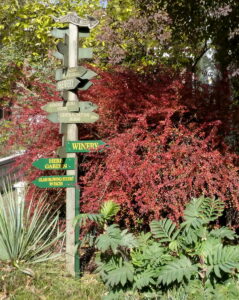

We didn’t find the bars or wines as captivating as strolling around and appreciating the artwork. Exploring the main building, the grounds, and even poking into some smaller buildings was incredibly enjoyable for us.
Similar to the previous day, the art offers a refreshing blend of styles and colors.
Again similar to the day before the art is a refreshing mix of styles and colors. Now that I’m older I enjoyed how aging is depicted through the art.






The variety of artwork is amazing. There is a little bit of this and that, something to strike just about everyone’s interest.




Additionally, outside on the grounds, there are numerous interesting things to see.
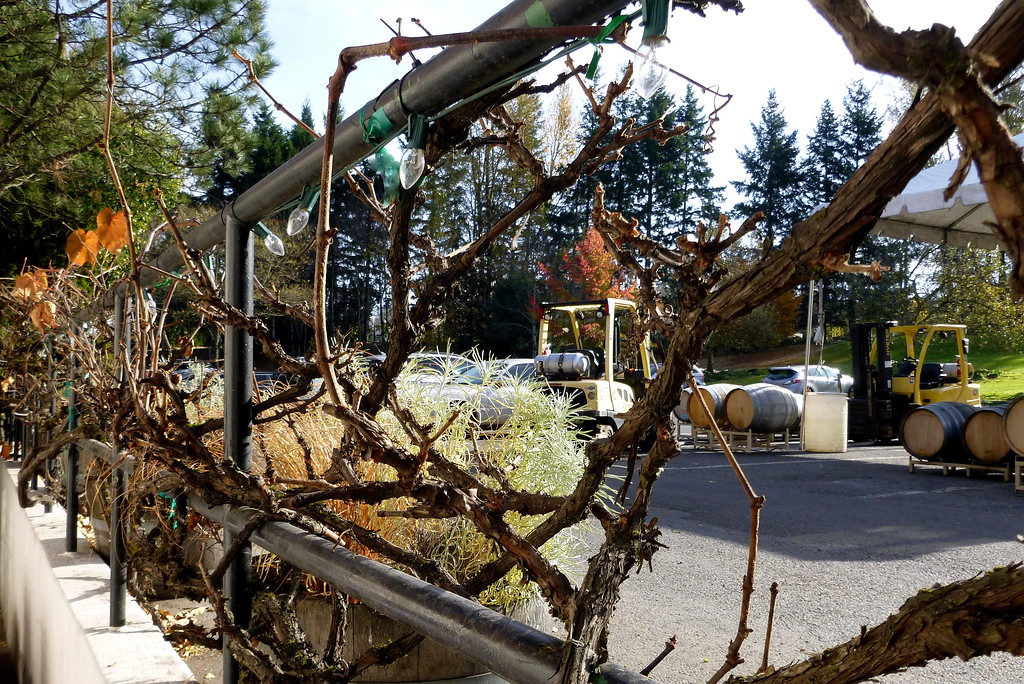




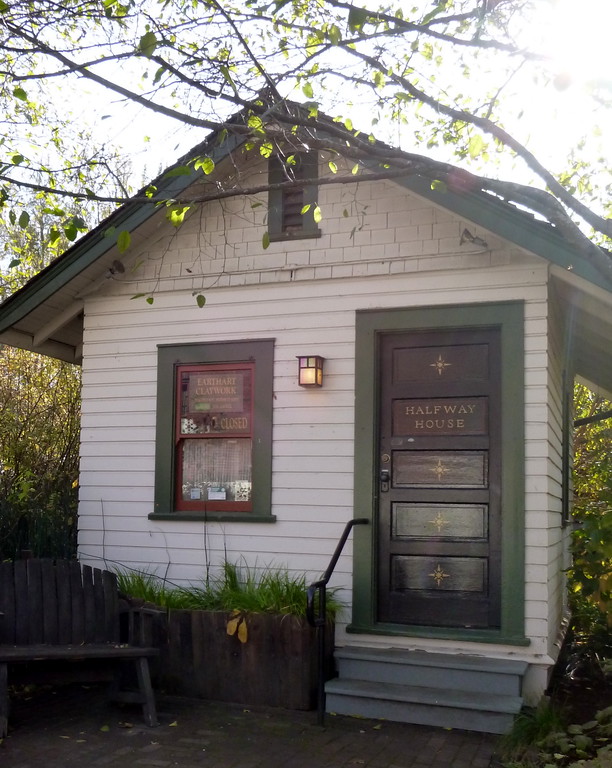
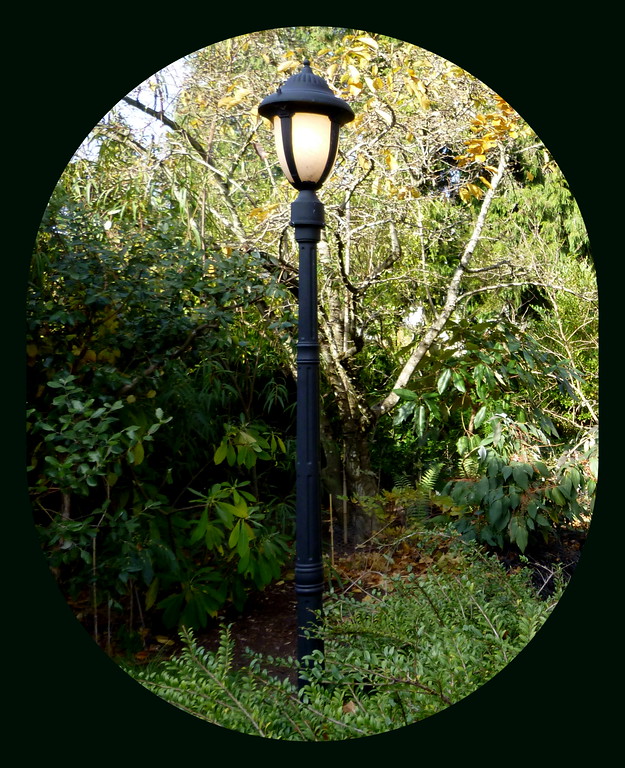
America’s Poor Farms, The Good and Not So Good
“Poor farms” were relief institutions providing food, shelter, and medical care to those in need, with some resembling genuine refugees while others were more prison-like. Since the 1970s, funding for the poor shifted to county, state, and federal resources, leading to the decline of poor farms and the rise of subsidized housing options like public projects and homeless shelters.
Cities had almshouses for the destitute, while rural areas had county poor farms, often acting as warehouses for the needy. To be declared a pauper, one faced scrutiny before the County Court, considered dishonorable at the time.
Early eligibility for a poor farm often required owning little more than $10 in possessions, with many being elderly and lacking family support. These institutions housed various individuals, serving as a mix of a working farm, hospital, nursing home, and orphanage.
The poorhouse era, aiming to punish poverty, diminished with the rise of social services during the Great Depression. Most poor farms closed in the 1930s and 1940s, with a few lasting until the 1970s in places like Texas.
During my childhood, my Mom would often say things like “you kids are going to put us into the poor farm” when we asked for unnecessary things. While I had a basic understanding of what poor farms were, I still don’t grasp why they aren’t available today for the homeless population.
Initially, I thought a Poor Farm was similar to what I observed at Edgefield—a warm place to live with food, medical care if needed, and residents working on the farm in exchange. I wasn’t aware of other facilities that resembled prisons, and I had heard concerns about Poor Farms violating people’s civil rights.
After my first visit to Edgecliff, I started reading about them to gain a deeper understanding. I discovered that they varied significantly and were more complex than I initially thought.
In my opinion, there might be value in having modern versions of poor farms, under a different name, for people without homes and resources. However, these places would need to be humane, providing medical and mental care for residents, if needed. In exchange, residents could contribute through farm work, meal preparation, laundry, or any tasks they are capable of. Those unable to contribute could still benefit from the facilities.
We were determined not to leave the Edgefield grounds without checking out the gift shop. Just like the rest of Edgefield, this took us a good amount of time. We leisurely browsed through all the t-shirts, knick-knacks, coffee, bar supplies, and everything else. We didn’t leave without a couple of souvenirs.
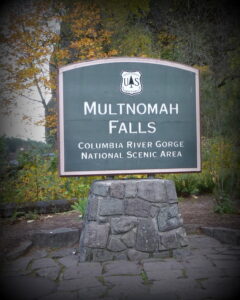
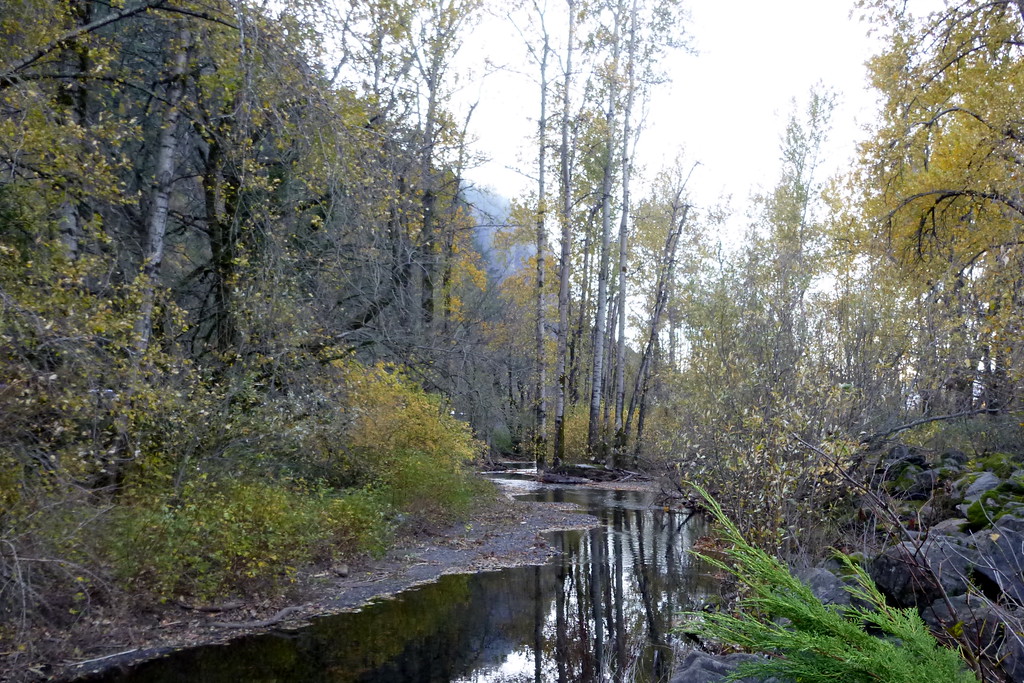
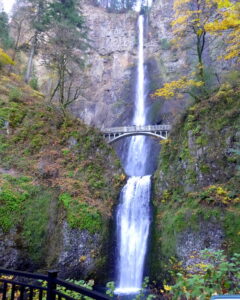
Multnomah Falls
It was a quick drive on I-84 east to the fun. At 611 feet Multnomah Falls is one of the tallest free-falling waterfalls in the United States. A short 5-minute walk from the parking area put us at the base of the falls, where we could feel the cool spray.
We viewed both tiers of the falls from the viewing area and finished our visit at the Multnomah Lodge, built in 1925, looking at things in the gift shop. This time we were able to get out without buying anything.
We haven’t done it but there is a paved trail to Benson Bridge, named after Simon Benson, who owned the falls in the early 1900s. From the bridge, you have a perfect view of the falls’ full height. The trail continues on to the top of the falls which is 2.2 miles with 700 feet of elevation gain. Another trail, which is more challenging at 5.4 mile loop with a 1600 foot elevation gain goes to Wahkeena Falls. Some day I will take the time to do those hikes.
Before his death, Benson gave Multnomah Falls to the City of Portland, which later transferred ownership to the USDA Forest Service
According to the Wasco legend, the Chief Multnomah’s daughter sacrificed herself to the Great Spirit from the top of Multnomah Falls. The tribes along the Columbia River initially celebrated her marriage to a neighboring tribe, but joy turned to sorrow when a widespread illness struck all the tribes. The medicine man claimed the Great Spirit demanded a sacrifice for the tribes to survive, specifically the Chief’s daughter. Although the Chief initially resisted, witnessing the sickness affecting his people, the daughter, in desperation, left quietly in the middle of the night and climbed to the top of the cliff overlooking the Columbia River. There, she threw herself off the cliff.
When the Chief discovered his daughter’s lifeless body, he prayed for a sign that her spirit was at peace. In response, water began pouring from the cliff, giving rise to what is now known as Multnomah Falls.
I find the Native American legend fascinating, but the reality is that the water for Multnomah Falls comes from underground springs on Larch Mountain. These springs provide a continuous water source throughout the year, with additional contributions from spring snowmelt. In the surrounding area, you can discover 26 more waterfalls.
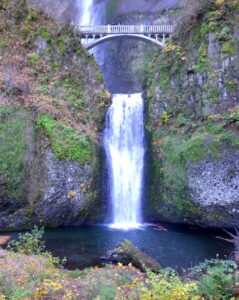

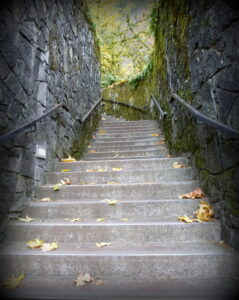
Once we left the falls, we only stopped to fuel up the van on the way back home. The trip was fantastic, and I thoroughly enjoyed spending time with my sister. We covered a distance of 1245 miles, exploring various enjoyable places. Despite the great time, I couldn’t help but miss riding my motorcycles and hanging out with my motorcycling friends.
